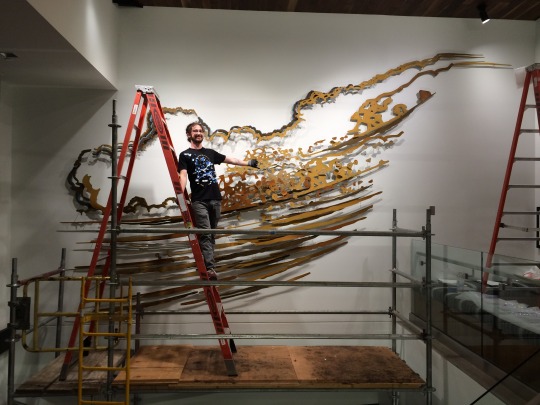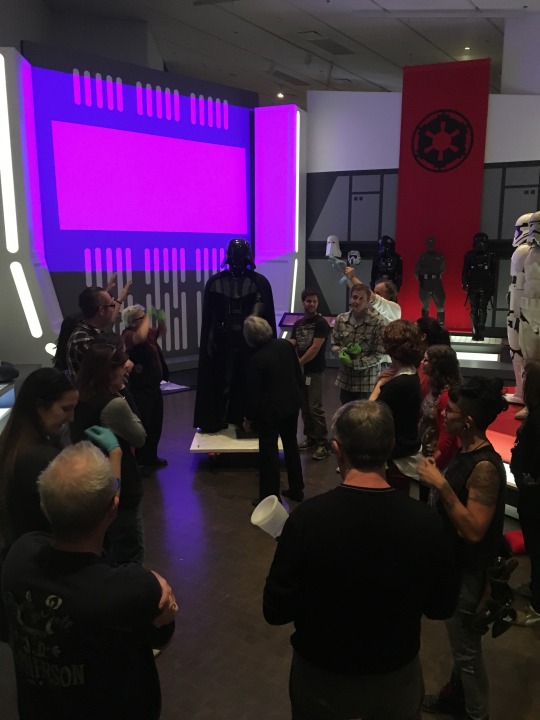#i know from experience... has happened in several internships and another trial period before
Explore tagged Tumblr posts
Text
I feel like I didn't make proper use of today. but I got several loads of laundry done and put fresh bedsheets and such on my bed. and that will have to be enough.
#also finished the 2 scribbles i posted earlier#maybe i'll watch a dvd before i inevitably have to go to bed to be as rested for work tomorrow as i can be...#kinda psyching myself out over this 3rd trial workday ngl#like i know i'll have to do everything on my own now. what if i mess up? what if i cost my boss money by messing up?#what if the customers get angry with me for being too slow???#because i KNOW i'm not as fast or skilled as the other workers#because of stupid brainfog and residual trauma shit#and my social skills and quick thinking are not what they should be#i could try to give it 180% to be on the same level as my coworkers but that'd burn me out in less than a week#i know from experience... has happened in several internships and another trial period before#the last one kickstarted the chronic pain and fatigue too#idk if i can find a good balance orz#also the wellfare application process is so damn difficult and takes weeks to be approved and idk if i can do that again#if i fail at keeping down a job...
4 notes
·
View notes
Text
Behind the Fourth Wall: My Experience as a Museum Worker

It’s a unique experience, art-handling – being a “preparator” (which autocorrect thinks isn’t real). Like with any manual labor, it’s rad to get paid to work out. But obviously, there’s much more to it than that. You touch the untouchable things, you have keys to rooms many will never know exist full of objects to be seen by sometimes even fewer (I mean, the amount of pictures on my computer I wanted to include in this post and just...couldn’t...for whatever reason...it’s more than just a couple), and you live behind the fourth wall that is the magic of the completed exhibition. You built the wall. And in a way, it’s like there’s some of yourself sealed in there.

There’s a sort of trivial glory in it, but also a kind of hilarious demystification, a rapid desensitization to the wondrous. And a lot of the most menial labor you could possibly imagine. Dozens and dozens of hours of out-of-body audiobooking while waxing-on/off. I haven’t been doing it long enough to become jaded yet, but I know very few career preparators it hasn’t happened to. But really, would I be writing this if I didn’t think it was awesome?
I’ve had a lot of people over the years ask me how I came to do work like this, so I want to give that question a bit of attention:
I had an internship and then a job at a gallery in college, the H&R Block Artspace – which was run by a really brilliant director and showed world-class art, but mostly entailed sitting at a desk and socializing with visitors. But toward its end, I met some real-live art-handlers who chuckled with sympathy when I tried to get on with them. That small private company very shortly after, however, got the contract for several years of building traveling exhibits from New York’s American Museum of Natural History at a brand new nature and science museum outside Kansas City. And they needed a big team all of a sudden, and gave me a call. So I started out building dinosaurs.

There’s a very ad-hoc feeling to that sort of context. You need this thing to fit with that thing and if you’re tool-savvy enough, you make it happen. Sometimes it’s not pretty but if it’s safe to let the public walk under then it will work. It’s fun, or at least engaging – the small-scope part of the job which is just the constant problem-solving and spontaneous fabrication strategies.

But the bigger picture that fascinated me from the beginning about this kind of work was the collision of information and architecture. This is what will always carry over into my future pursuits: the question of, how do you best craft an architectural space, one inhabited momentarily by all varieties of people, the sole purpose of which is to educate each of those people about some element of culture in an engaging way?
I got my taste, but quickly realized that it’s incredibly hard to make a living in this career path. The nature of art-world work is that almost all positions are contract, meaning you need a minimum of probably 2-3 jobs at once to juggle in order to make it work, and still often there are dead periods where you are really panic-level strapped for cash. So I branched out quickly in as many relevant directions as I could, taking any skill-building entry-level job I could find. Some of the paths I took were fabrication-oriented: doing backend assembly of custom commercial cabinetry, then finish work on museum casework and artists’ sculptures. Some were art-handling: private transport and storage, hanging galleries, assisting professional artists on installs, etc. There’s a resume on my website *eye roll*.

Every one of these jobs I gained through face-to-face ‘networking’, through someone I met at another gig. Meaning at the recommendation of friends. Most of them I worked with my best friend, also Will, who got me into the world of art museums. Team Will, shoutout.

I’ve in turn gotten more than a couple of people their first museum jobs. There’s nowhere I’ve seen where ‘who you know’ matters more.
That being said, not everyone is cut out for it. Most aren’t. I just happen to associate with generally exceptional people ^______^ . It takes an eye for a ridiculous level of detail, and a hand that can consistently perform tasks attuned to that detail without fucking anything up. Plus snap-judgment problem solving skills for often dangerous and/or costly predicaments. You also generally need to be a fun person, since the work can get quite tense (understatement for the 60hr/wk installs my team is used to) and it helps to be able to lighten things up.

It’s interesting how many different skillsets and attitudes intersect in this world. You have very blue-collar-flavored work surrounded by typically intellectual types of people. The stakes are high (put it in the back of your mind that just about every individual object around you is worth more than you might ever make in your life, accumulated) so people are very serious, especially around art, and while there’s a special level of hero-ness in actually touching The Stuff, it can tend to involve less creativity, for good reason. I was a Lego kid, so the construction and space-creation side of the job was always a little more engaging for me, personally.

So I really lucked out to land where I’m at today at the Denver Art Museum. My current job is basically to assist in the construction, fabrication, assembly, and finishing of everything that exists between the empty room and the art. It’s called “Exhibitions Production”, and at DAM, what a ‘production’ it is. We do really high-dollar build-outs designed to be theatrically jaw-dropping to the public. At standards of craft that I’ve never seen anywhere else as ‘standard’ – think 1/16″ margins on nearly everything. Which, combined with the irregularly angled Liebeskind building we do most of our work in, makes my job pretty complicated. Which keeps me out of trouble, which is nice.

So back to how the hell I landed in such a good one:
In order to secure this job (they’re extremely coveted and basically impossible to get without personal invitation), I had to work as a guard, a ‘gallery host’, for half a year. I told my hiring managers in that interview that I only wanted the job to meet the art-handlers who I would be working for in the future. It was interesting to take a step back from the behind-the-scenes world I was used to and be basically at ground-level with the visitors, an underling of the museum social hierarchy who exists as a mediator of rules. By interesting I mean almost totally shitty, with the exception of a much slower-paced experience of observing many, many people engaging the same exhibits day after day. I had always worked to put the shows on, but by the time that is over with you are sick of the show and already on to the next thing anyways. Catharsis. This was sort of the opposite – like a Groundhog Day of visitors forever wiping their oily foreheads all over the fourth wall. Incident Report.
But it offered an opportunity to see both sides of the idea of ‘the exhibition’. The before and after. To watch people’s patterns of real-live interaction with shows that clearly had intricate thought put into specifically the visitor-engagement / education elements of their designs.
And it also worked: it gave me the opportunity to see someone pushing a cart full of tools, whose boss’s email I got from him, who I proceeded to harass frequently over the next half a year until he finally agreed to give me a trial run.
Since my promotion to the Exhibitions department, moving on to work with the designers and administrators in charge of those experiences I mentioned – that has been so fulfilling. It’s been the best job I’ve ever had, but beyond just enjoyable day-to-day-ness, it planted the seed that has grown into my biggest fascination now, which is the idea of the future of the museum experience.
“Museum Experience Design” – the museum in the digital age. Information architecture meets architecture. Rather than didactics for a universal audience, a modal, entirely custom veil of educational opportunity tailored to each visitor... That kind of thing. That’s where I’m headed. But that’s an entirely different topic.
For now I just feel super lucky to be on such a ridiculously talented team at a big, well-funded museum that puts on such extravagant shows. There’s a lot to observe, and a lot to learn.

I guess the moral of the story, if there is one, is that if you really want to get into this kind of work, you need to be talented, i.e. probably an artist (no, not a conceptual artist), but mainly you need to put yourself out there and meet the people who can hire you. And be relentless in trying to get them to do it. There aren’t a lot of these jobs but they’re worth trying to get.
If you land one, just make sure you don’t drop anything, then have fun.
1 note
·
View note